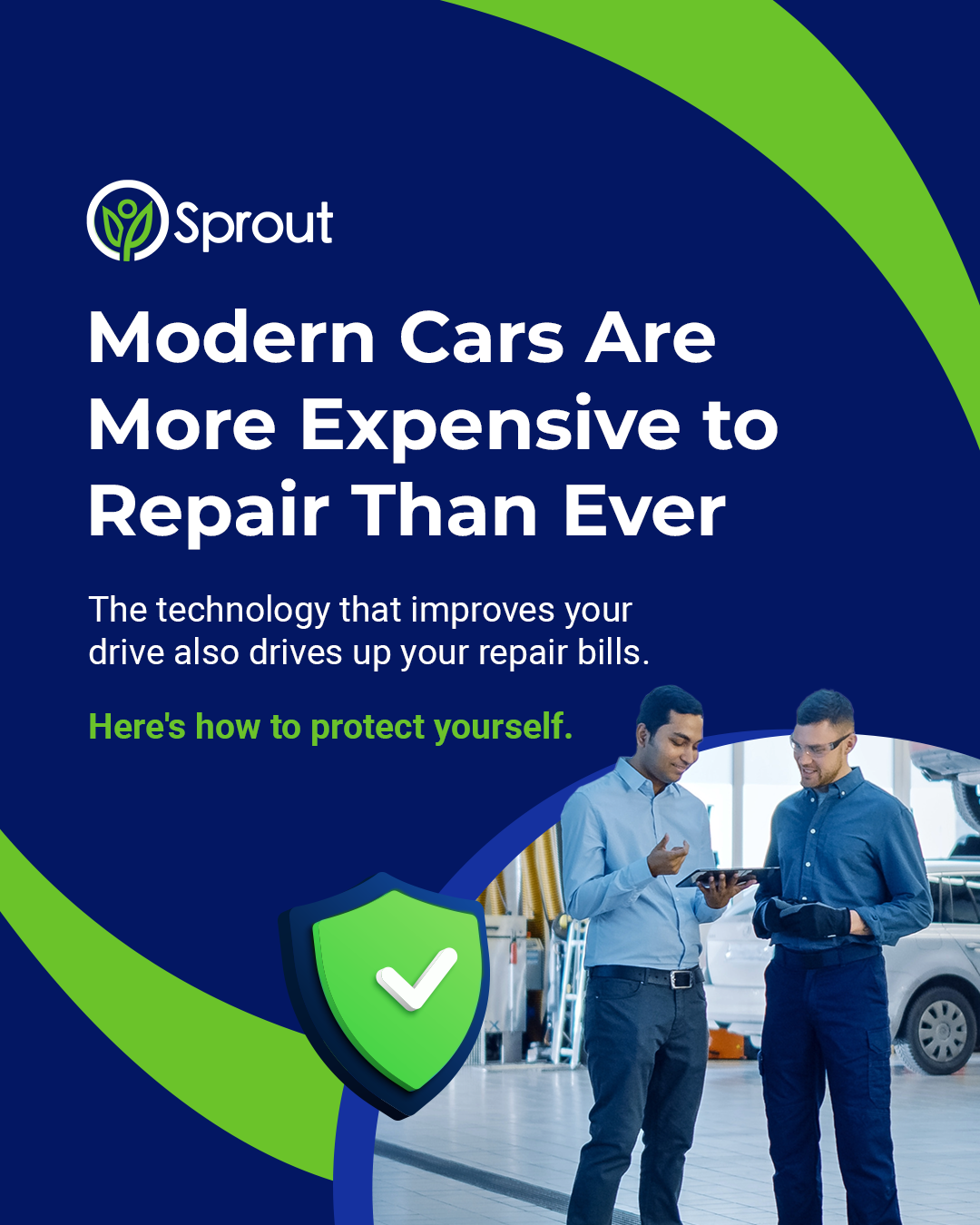You might think car repairs today cost about the same as they always have, especially if it’s been a while since you invested in a new vehicle, with all the modern bells and whistles. You know, the high-tech infotainment system, bumper-to-bumper sensors, everything computerized.
But the reality is, it’s an entirely different landscape in terms of car repairs.
Today, a faulty sensor can have you stranded and cost more to fix than a new set of tires, and a blown A/C system can hit your wallet harder than a fender bender.
If it feels like car repairs have gotten more expensive, you’re right. And it’s not just from inflation. It’s everything from advanced tech to part shortages, tariffs, labor costs, and more.
To help you understand what to expect, let’s separate myth from fact. If you know what’s driving the costs up, you’ll be better prepared and know how to protect yourself before the next surprise breakdown.
The 5 Most Common Myths About Modern Vehicle Repairs
Myth #1: “Cars are built better now, so they’re less likely to break down.”
Fact: Today’s cars are more complex, and that means more things can go wrong.
While it’s true that cars have come a long way in terms of reliability, they’ve also become rolling computers. Between infotainment systems, advanced safety features, sensors, chips, and hybrid/electric powertrains, today’s vehicles have 100+ million lines of code and dozens of electronic components working together.
That means more opportunity for failure, and more specialized repairs when something does break.
For example, a windshield-mounted camera or sensor used for lane assist or emergency braking? It can cost between $800 and $1,500 to replace and recalibrate. And it’s something that your neighborhood repair shop may not be able to fix.
Myth #2: “Most repairs are simple and cheap.”
Fact: Even common repairs are getting more expensive. According to RepairPal’s 2025 analysis, the average repair bill across U.S. repair shops has increased to $652, up 18% from just three years ago.
Why the jump?
- Parts are more expensive (especially OEM components) and may be subject to shortages.
- Labor rates have climbed due to a shortage of skilled technicians.
- Diagnostic work now requires advanced scanning tools and software.
Consider this. A modern A/C system failure can cost $1,200–$1,800 to repair, depending on the make and model. Compare that to $400–$600 a decade ago.
Myth #3: “I’ll just go to my local mechanic; it’ll be cheaper.”
Fact: More repairs now require dealership-level tools and expertise. Independent shops are still great for many issues. Still, when it comes to high-voltage battery systems, ADAS (Advanced Driver Assistance Systems), or drivetrain diagnostics, even they may need to send you to a specialty shop or dealership.
EV battery diagnostics or hybrid powertrain issues can’t be addressed without specialized training and tools, which often come at a premium.
Myth #4: “If something happens, my insurance will cover it.”
Fact: Insurance doesn’t cover mechanical breakdowns. This one deserves a quick reminder. Auto insurance protects against accidents, theft, and weather damage, but not wear and tear or system failures.
When your transmission gives out or your alternator dies, you’re on your own. Unless, of course, you have protection like Sprout Assure’s Mechanical Breakdown Coverage.
Myth #5: “I just bought a new car, so I don’t need coverage yet.”
Fact: Even new vehicles are expensive to fix, and not all parts are under warranty.
Manufacturer warranties have time/mileage limits and often exclude things like infotainment systems, electrical glitches, or failed A/C components, unless they’re caused by a factory defect.
And as modern vehicles age, even just a couple of years, those high-tech systems are more likely to fail.
In fact, according to a 2024 Consumer Reports survey, drivers with vehicles under 5 years old reported an 18% rise in electrical system failures compared to previous generations.
So, What Can You Do About It?
You can’t go back to the simpler days of carburetors and $200 repairs down at the corner shop, but you can protect yourself from the high costs that come with today’s vehicles. And it’s not just by buying an expensive extended warranty.
Instead, choose Sprout Assure.
Sprout Assure: Protection for the Cars (and Repair Costs) of Today
Sprout Assure isn’t a traditional extended warranty. It’s a flexible Auto Club Membership with built-in Mechanical Breakdown Coverage designed for the real-world needs of modern drivers.
Here’s what you get:
- Coverage for major components like engine, transmission, suspension, electrical, brakes, A/C, and more.
- Two plans to choose from: $0 deductible or $100 deductible.
- The freedom to use any licensed mechanic, with no repair shop restrictions.
- Transparent pricing with no hidden fees or confusing fine print.
- Bonus benefits: $150/year in towing reimbursement + $100/year toward oil changes.
It’s full car protection that matches the complexity and cost of today’s vehicles.
Don’t Let High-Tech Repairs Empty Your Wallet
Modern vehicles are more advanced, but that also means more parts to fail. Even small repairs can now cost $1,000+.
Insurance won’t help, and even extended warranties don’t last forever. Sprout Assure protects you from these rising costs with clear, driver-first coverage, because you shouldn’t have to choose between fixing your car and staying on budget.
With Sprout Assure, you won’t have to. It’s real protection and modern coverage, built for the road ahead.


